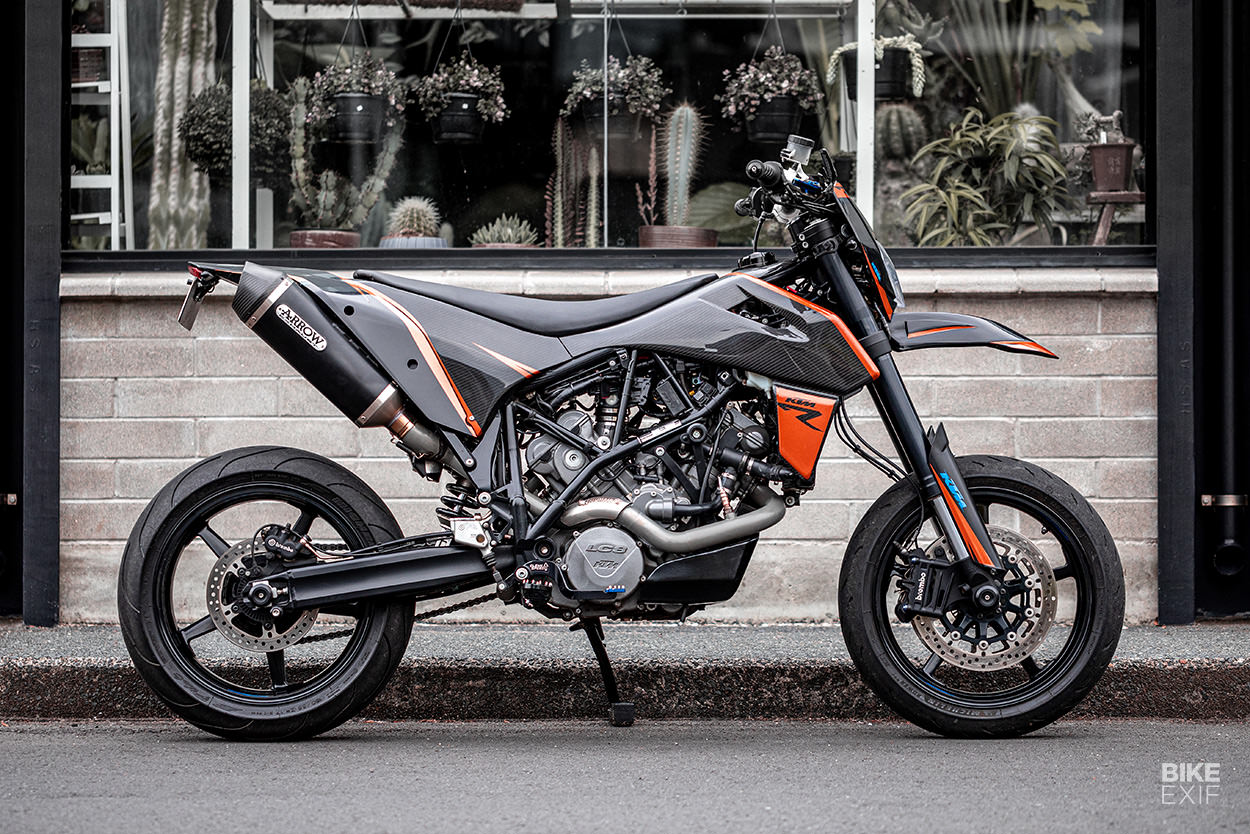
KTM made their bones with dirt bikes, but these days they’re just as well known for their wild street bikes. Their hit list includes models like the KTM 990 Supermoto—a 999.8 cc v-twin motard with aggressive lines and decent components.
First released in 2008, it came in two variants: the purist 990 SMR, and later the more touring-focused 990 SMT. The SMT was still a goer, but weighed more and looked weird, thanks to its deeply stepped seat and its nose fairing. But hobby builder Nick Murray’s fixed all that.
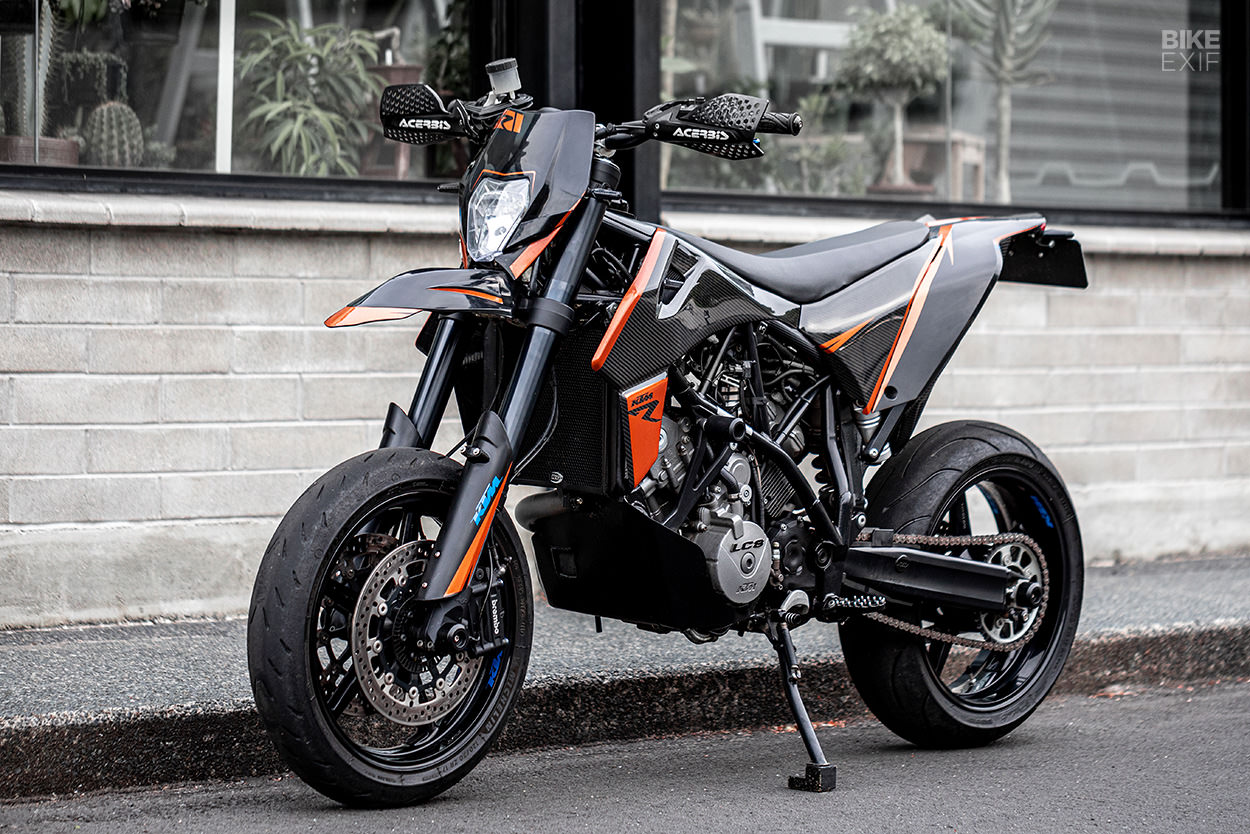
Based in Whakatane in the Bay of Plenty, New Zealand, Nick’s worked as both an electrical and mechanical engineer. And it shows in the way he’s pieced this wily KTM together.
At a glance, it looks more like a well-sorted track machine than a custom. But put it next to a stock example, and it’s immediately clear how much work went into it. Look even closer, and you’ll notice the carbon fiber weave in the bodywork, and the host of smaller tweaks that are sprinkled throughout.
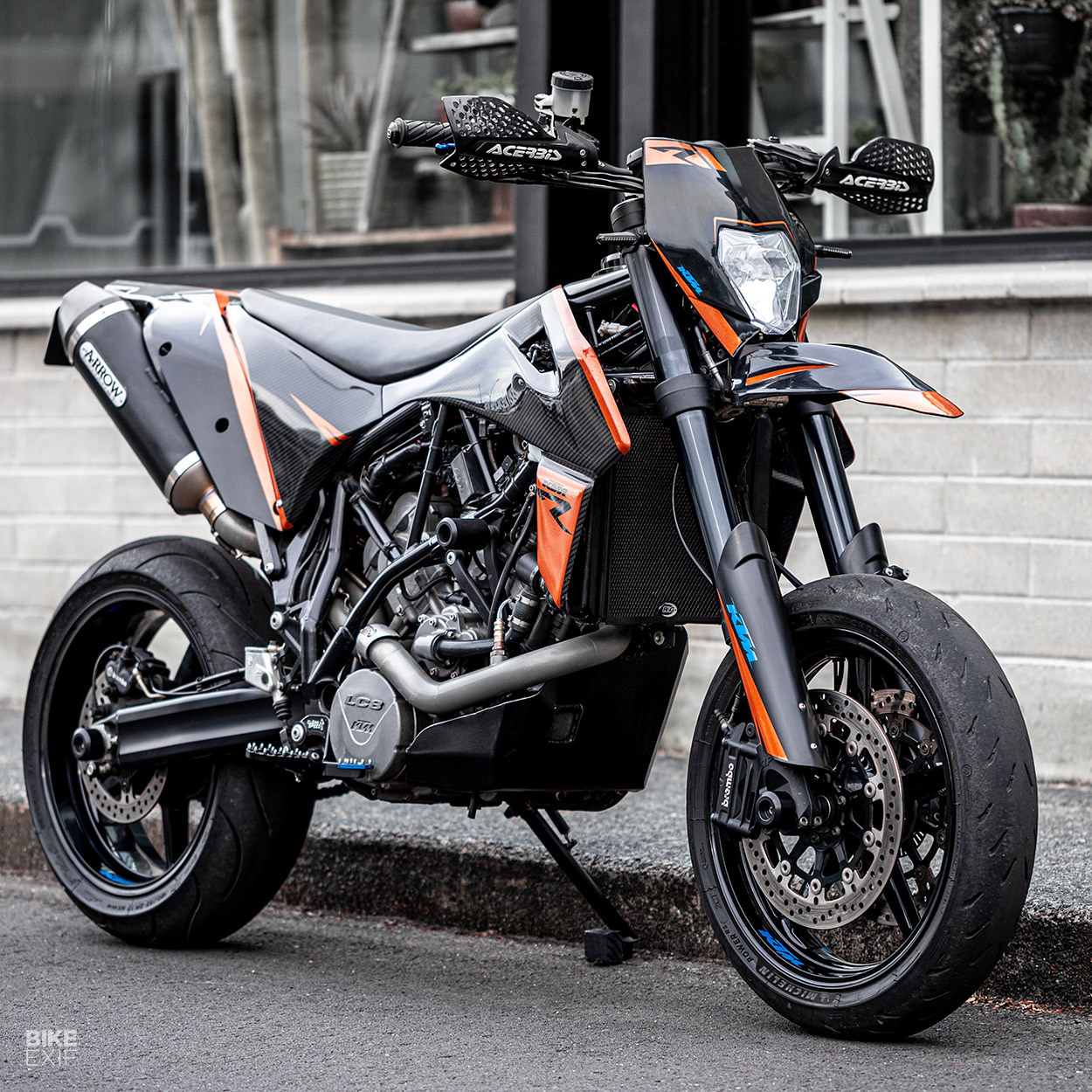
But what prompted him to build it in the first place? “Short answer: because I could,” he quips. “I already had a 690 cc supermoto, which despite several performance upgrades still needed more power.”
“In 2019 I happened upon a 2011 KTM 990 SMT. I loved the power but hated the weight and looks, and I’m not gonna lie, I was inspired by Max Hazan’s 950 SMR build that Bike EXIF featured a few years back. And so, after 18 months of nights and weekends building, my ‘carbonSMR’ was born.”

Despite the bike’s track-bred looks, Nick’s built the KTM to do duty on the street, too. He’s kept the EFI and ABS, hasn’t touched the wiring at all, and the bike holds 14 liters (about 3.7 gallons) of fuel. All thanks to a very clever custom fuel tank setup.
Nick bolted off the KTM’s original subframe, then fabricated an aluminum fuel cell that doubles up as the new subframe. To build it, he first designed a wire frame to get the general shape, did some basic CAD work to nail the angles, then TIG welded the final unit together. He needed somewhere to put the fuel pump too, so there’s a secondary tank up front that houses it, along with the filler cap.
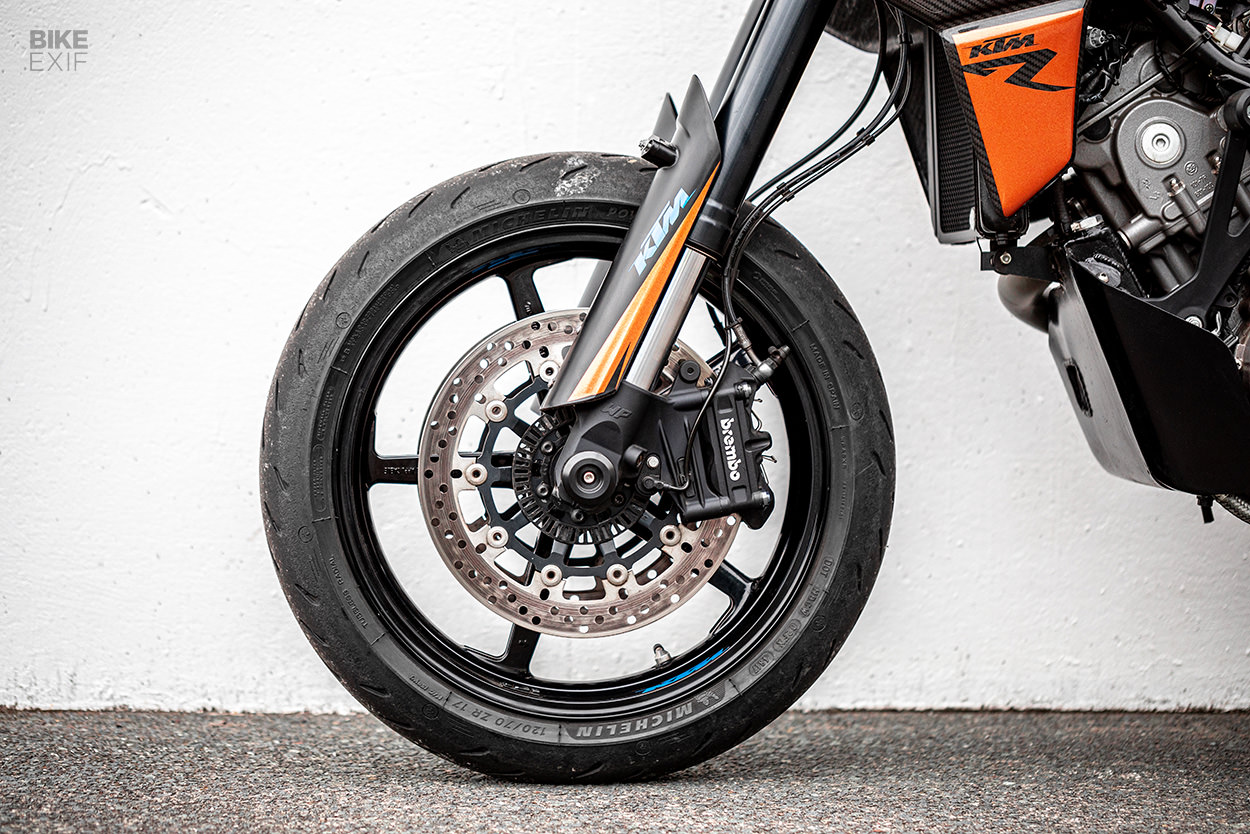
There’s more fabrication lower down, with an aluminum oil tank disguised as a sump guard. It’s mounted to the KTM’s OEM mounting points—a trend that Nick’s carried through to the whole build. “Everything can be transformed back if I wanted,” he adds.
Relocating the fuel and oil created space to drastically transform the SMT’s bodywork. All of the new panels were hand-formed from scratch—first using aluminum, so that Nick could ride the bike and fine-tune the ergonomics before committing to a final design.
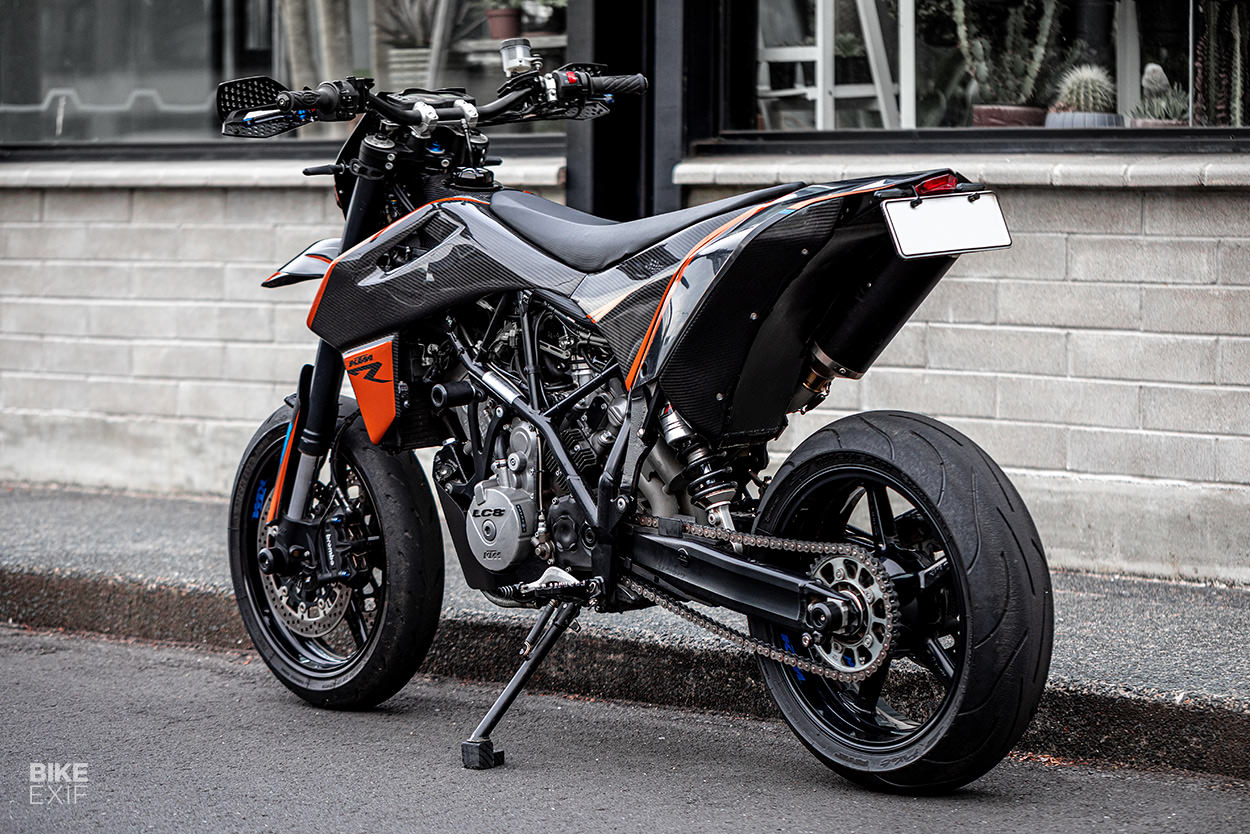
“It took several iterations to balance everything out, get the suspension sorted, the look right and still have reasonable fuel capacity,” he explains. “It was the difference between the bike feeling like a homebuilt clunker, and feeling like something that KTM should have made!”
Once everything was finalized, Nick coated the aluminum parts and used them to form carbon fiber molds. The final parts were then cut from carbon fiber and vacuum cured in an autoclave, thanks to Gregor at Haeberline Composites.

Nick scoured the KTM parts bin for a few pieces to finish the set. The headlight’s from one of their enduro bikes, the front fender’s a supermoto part, and the seat’s off a KTM 450 SX.
This SMT is more than just a cosmetic job though. The KTM performance specialists, Rottweiler, hooked Nick up with a custom intake to fit the space left by the bodywork. “There’s not enough room for a 990 intake,” he explains, “so I asked the guys at Rottweiller to marry up a 990 base and 950 Super Enduro domed filter element.”
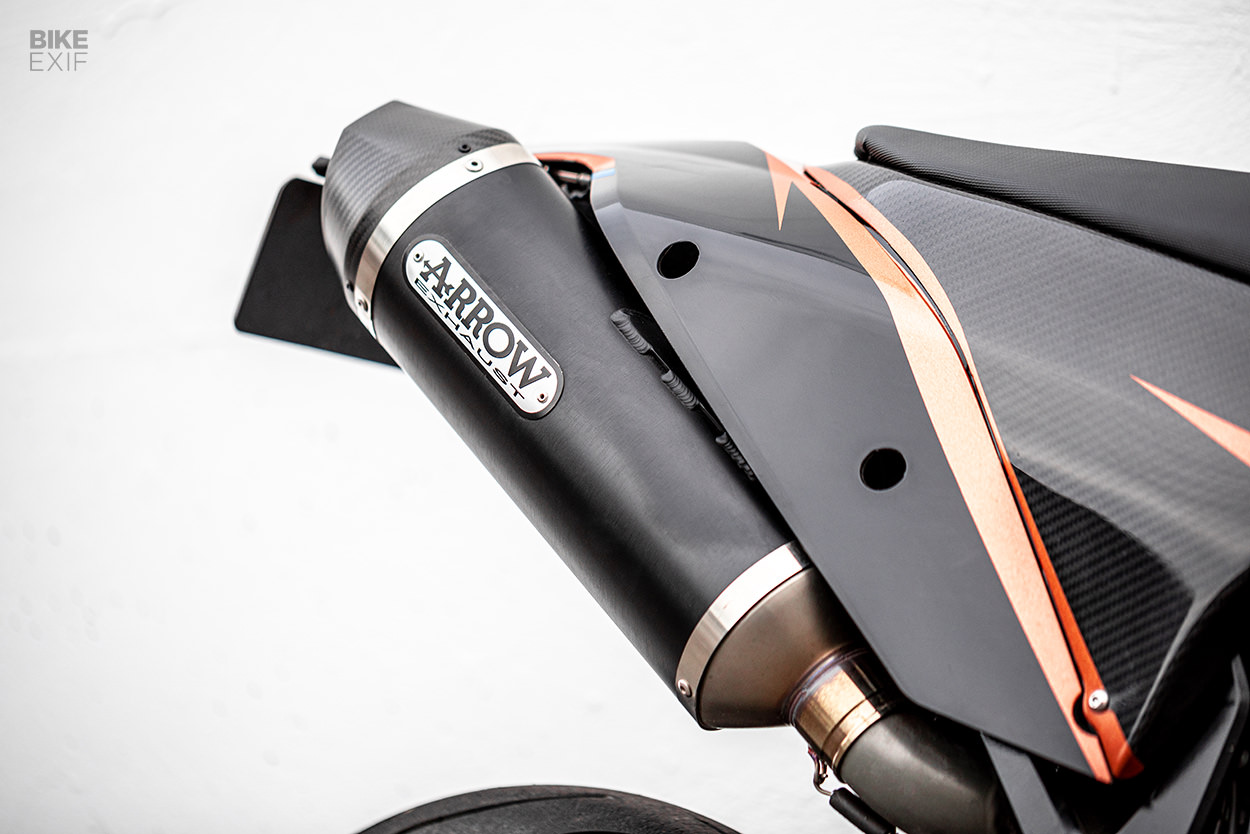
The exhaust headers are from Rottweiler too, right up to the two-into-one junction. From there on it’s all custom, until it runs into an Arrow silencer. Naturally the bike’s had a run on the dyno, and reportedly makes 112 hp at the rear wheel.
The KTM’s already good WP Suspension’s been given a boost with Race Tech internals up front, and a re-sprung rear shock. Nick also installed a slipper clutch from TSS, and a HealTech quick-shifter. The battery’s been swapped for an Antigravity Lithium-ion unit, tucked into a custom-made box behind the engine’s rear cylinder.
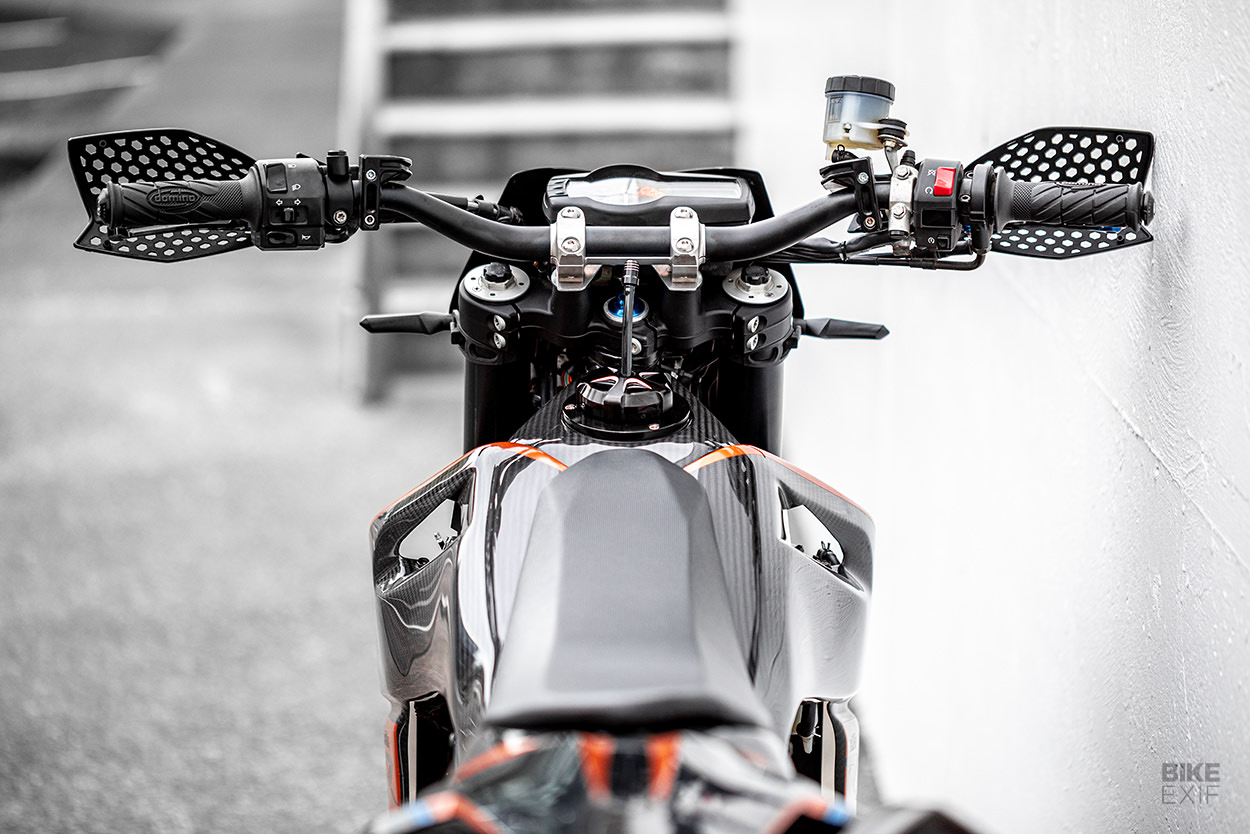
The cockpit features new bars, grips, levers and hand guards, but the switchgear is all stock. The ignition’s been removed though, with a keyless RFID ignition installed in its place.
Between the visual changes and the performance upgrades, this SMT now has loads of show and go—and weighs just 353 lbs, wet. “It’s a super-supermoto, and while it’s great fun on the road (and New Zealand has some amazing roads), it’s incredible on the track.”
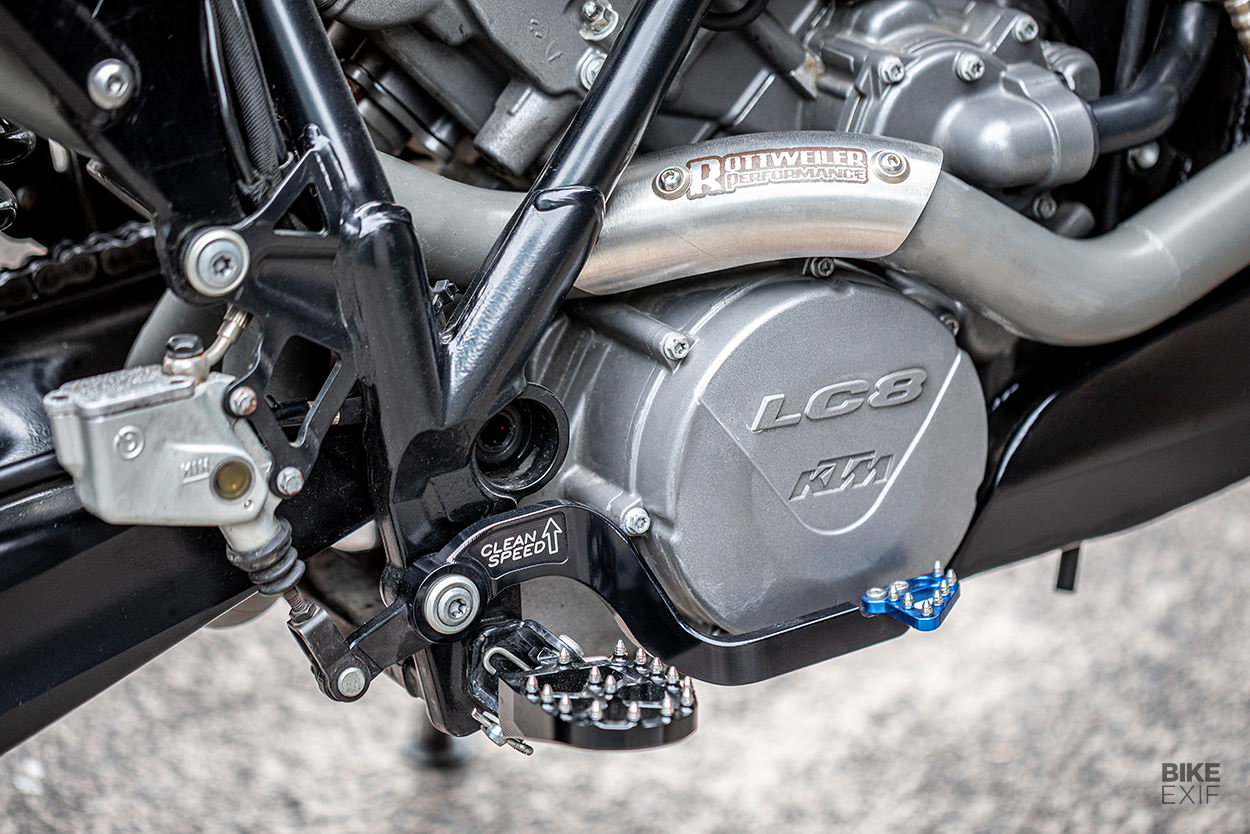
“I’ve been asked what it’s like compared to a 450cc supermoto; like night and day. The fun on a 450 is wheelies, twisties and shifting through the gears to say 120 km/h. This 990 is faster than that in second gear, so most corners you’re coming in way way hotter than a 450.”
“Thankfully the suspension is perfectly firm and the twin front discs pull you up real fast. It’s honestly gonna be too much for most people.”
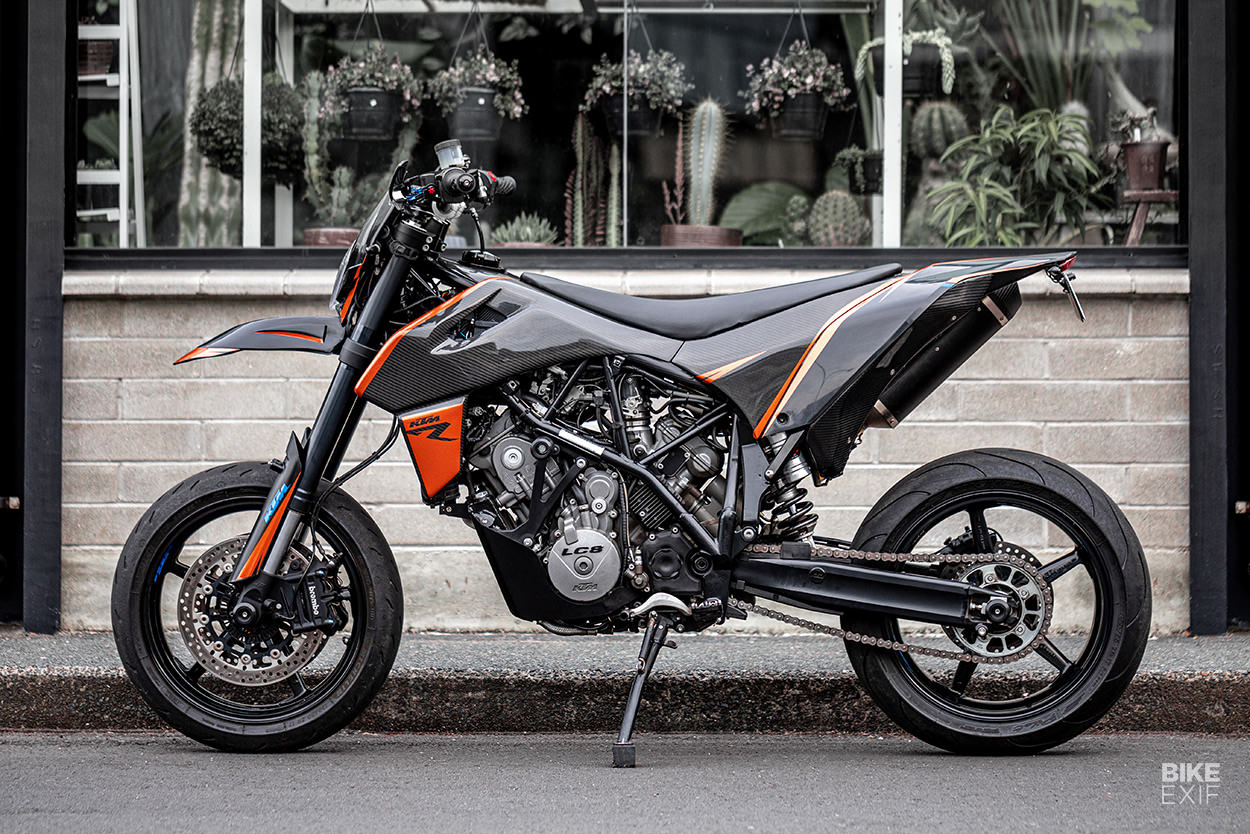
Since most of Nick’s KTM is effectively plug-and-play, he’s now toying with the idea of turning it into a kit. “The kit idea went a bit crazy on social media,” he says “and the level of interest in my project internationally has been really humbling. So much so, that in my spare time I’m refining the design with all learnings from the first bike—by building a second bike, and 3D modeling everything so it can be priced for manufacture.”
“A kit won’t be cheap, but heck it’d be cool.”
Nick Murray Instagram | Images by Charles Jordan
